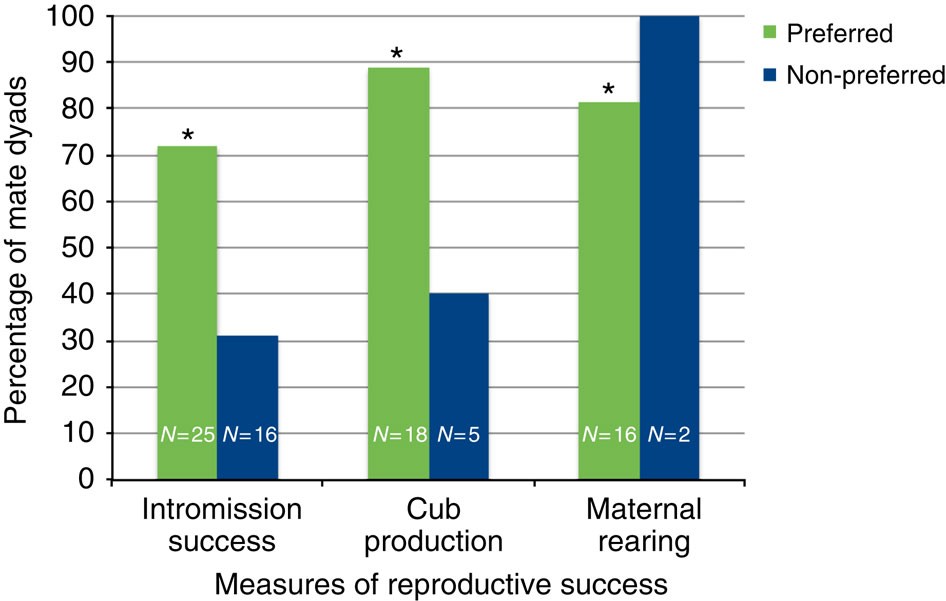At last, Our Questions Answered!
Do male giant pandas vocalize more when females next to them are in heat? Do pandas who tap their toes during sleep pace around their exhibit more? Are squirrels more active in warmer, dryer weather?
What is your data telling you?
What is Data Analysis?
Data analysis can be the most revealing and fascinating steps in research. It’s where patterns, correlations, oddities, or things you never even expected to see will emerge! It can; however, be a little tedious, as it often involves removing any errors in the data before the actual analysis process.
Data Analysis
Data analysis identifies correlations and patterns in data collected to allow individuals to make informed decisions based upon the results.
For instance, below is a data analysis graph from our mate choice study indicating that preferred mates had higher intromission success, cub production, but a little poorer maternal rearing.

How does PDXWildlife analyze data?
In analyzing giant panda research data, we are evaluating the relationships between behaviors performed and the impact of their surroundings such as environmental factors. In the above example, we were looking at how mate preference impacted intromission success, cub production, and maternal rearing. At this stage in behavioral research, further data collection may be required for a specific target.
For instance, we may want to do more research on why maternal rearing seemed better in the non-prefered group…perhaps a reason will emerge…or perhaps we just need more data!
What tools can you use to Analyze Data?
- One of the best tools PDXWildlife uses for data analysis is Microsoft Excel. With numerous formulas and, analysis and organizational techniques, we are able to identify any valuable missing information, and determine patterns and correlations that are critical in answering our research question. Other programs that may be used to analyze data include, R, Python and Java.
The process of analyzing data allows us as scientists to extract valuable information and form a conclusion that will further help scientists in the field understand the significance behind giant panda behaviour and their surroundings.

PDX Wildlife Team

